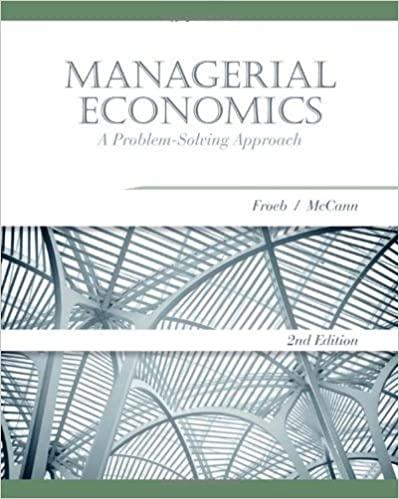Question
Instruction: Please read the following case study and answer the subsequent questions. All answers must be based on this case study, yet incorporate analysis from
Instruction: Please read the following case study and answer the subsequent questions. All answers must be based on this case study, yet incorporate analysis from researches which is not limited in this case study only.
THE CREDIT CHANNEL OF MONETARY POLICY
According to some economists, besides working through interest rates and exchange rates, monetary policy also affects credit supply and demand. These effects are called the credit channel of monetary policy. On the supply side of the credit market, according to this theory, tight monetary policy leads to reduced lending by banks. The reason is that, a tightening of monetary policy reduces bank reserves and thus the quantity of customer deposits that banks can accept. With fewer deposits on hand, banks have a smaller quantity of funds available to lend. As banks cut back on their lending, the argument goes, borrowers who depend on banks for credit, such as consumers and small firms, are unable to obtain the credit they need to make planned purchases. The resulting decline in spending depresses aggregate demand and thus economic activity.
On the demand side of the credit market, according to proponents of the credit channel, tight monetary policy has the effect of making potential borrowers less "credit-worthy," or less eligible for loans. Consider for example, a firm that has a substantial amount of floating-rate debt, or debt whose interest rate is tied to the current interest rate in the market. If a tightening of monetary policy raises interest rates, the firm's interest costs will rise, reducing its profitability. The firm's reduced profitability makes lending to the firm riskier (the firm is more likely to go bankrupt), so the firm has trouble obtaining credit. Alternatively, consider a consumer who wants to use some shares of stock that she owns as collateral for a bank loan. Tighter monetary policy reduces the value of those shares (as financial investors, lured by higher interest rates, switch from stocks to bonds). With reduced collateral, the consumer will be able to borrow less. In either example, the reduction in credit available to the borrower is likely to lead to reduced spending and thus a weaker economy.
What is the evidence for the credit channel? On the supply side of the credit market, many economists would argue that the credit channel was powerful in the United States in the 1960s
and 1970s but has been less so recently. The reason for this weakening is that the deregulation of the banking sector and elimination of reserve requirements for some types of large deposits have made it easier for banks to maintain their lending, despite a reduction in bank reserves caused by tight money. For example, today (unlike twenty years ago), a bank that loses deposits can replace them by selling certificates of deposit to corporations or wealthy individuals. A certificates of deposit is a large fixed-term debt obligation of the bank, against which no reserves need to be held. As the bank doesn't need to back its certificates of deposit issuances with reserves, a tightening of monetary policy doesn't affect its ability to raise funds in this way (except, perhaps, by raising the interest rate that the bank must pay).
The evidence that monetary policy affects the demand side of the credit market is stronger. For example, consumer and small firm spending is more sensitive to monetary policy than spending by large firms. A likely explanation of this finding is that consumers and small firms are financially riskier than large firms to begin with, so when monetary policy tightens they are much more likely to find themselves disqualified for loans. Bankruptcies do increase among small firms and consumers following a tightening of monetary policy, and small firms and consumers also receive less credit after monetary policy tightens, relative to that received by large firms.
QUESTION
(a) Examine the advantages of credit channel as a monetary policy option.(10 marks)
(b) Discuss the reasons for credit channel to lose its popularity as a monetary policy option.(10 marks)
(c) Does tight monetary policy necessarily lead to weaken economic performance? Clarify your answer.(10 marks)
(d) Discuss the mechanism and implications of the policy discussed in (c) on real GDP and prices. Simulate your answer by applying the cause-effect chain diagrams i.e. money/credit market, investment demand schedule, AE and AD-AS model.(20 marks)
Step by Step Solution
There are 3 Steps involved in it
Step: 1

Get Instant Access to Expert-Tailored Solutions
See step-by-step solutions with expert insights and AI powered tools for academic success
Step: 2

Step: 3

Ace Your Homework with AI
Get the answers you need in no time with our AI-driven, step-by-step assistance
Get Started


